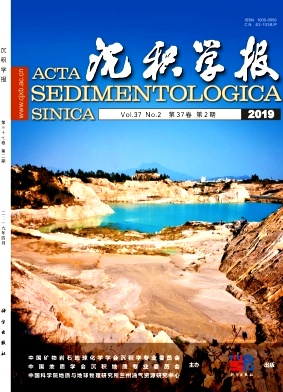Accumulation Mechanism for Natural Gas in the Huoshiling Formation of the Dehui Fault Depression, Songliao Basin
doi: 10.14027/j.issn.1000-0550.2018.131
- Received Date: 2018-01-16
- Rev Recd Date: 2018-04-23
- Publish Date: 2019-04-10
-
Key words:
- Dehui fault depression /
- Huoshiling Formation /
- natural gas /
- gas source correlation /
- hydrocarbon accumulation period
Abstract: The Huoshiling Formation is a favorable exploration layer for deep natural gas in the Dehui fault depression. Based on the analysis of the tectonic evolution in the study area, typical gas reservoirs in the Huoshiling Formation are dissected in detail. Combined with the basic seismic, well logging, and drilling data, integrated analyses of light hydrocarbon, source rock, and fluid inclusion data were used to study the gas accumulation mechanism of the deep Huoshiling Formation in the Dehui fault depression. The results show that the average total organic carbon (TOC) of the source rocks in the Huoshiling Formation is more than 1.0%, and the average value of S1+S2 is 0.5-2.0 mg/g. The types of the source rock are mainly Type Ⅱ1-Ⅱ2, and Type Ⅲ is supplemented. The organic matter has reached maturity, The Ro mean value is 1.5%, and source rocks have greater potential for hydrocarbon generation. The natural gas in the lower part of the Huoshiling Formation comes from the source rock of the Huoshiling Formation, and the natural gas in the upper part of the Huoshiling Formation is mainly derived from the source rocks of the Huoshiling Formation but is influenced by the source of the overlying Shahezi Formation. The migration of natural gas is dominated by vertical fault propagation, and the lateral transport of sand bodies in the reservoir is supplemented. Based on the analyses of fluid inclusions, gas-source correlation, and hydrocarbon generation and the expulsion of source rocks, three episodes of hydrocarbon migration can be identified, namely 130 Ma, corresponding to the deposition of the Yingcheng Formation, 115-105 Ma, corresponding to the Quantou Formation, and 95-75 Ma, corresponding to the deposition of the Qingshankou Formation-Nenjiang Formation.
| Citation: | DENG ShouWei. Accumulation Mechanism for Natural Gas in the Huoshiling Formation of the Dehui Fault Depression, Songliao Basin[J]. Acta Sedimentologica Sinica, 2019, 37(2): 432-442. doi: 10.14027/j.issn.1000-0550.2018.131 |






 DownLoad:
DownLoad: